When the Australians let the genie out of the alcopops bottle in 1995 no one realised how radically it would shake up the UK drinks industry.
Now, alcopops and their more acceptable successors, flavoured alcoholic beverages (FABs) or premium packaged spirits (PPSs) the industry has never come to an agreement on what to call them -- have changed the face of the drinks trade and consumers' perception of alcohol.
They took the gloss off the growth of the premium packaged lager market in the 1990s and knocked a hole in cider sales which have never recovered.
In recent years, PPSs have become the must-have tipple in pubs and clubs, where they outsell some of the leading beer brands, which has helped push the market value to £838m. And despite retailers in the take home market being slower to realise the opportunity, ACNielsen still valued the sector's off-trade sales at £282m last year growing at 35% in value and 40% in volume.
But the drinks' sweet nature and close association with soft drinks nearly sealed their fate very early on. The first two big brands Hooper's Hooch and Two Dogs tasted like lemonade but had a 5% alcohol kick. The industry did itself no favours by using funky cartoon graphics on the packs which provided direct links to youth culture.
The drinks became the focus of those campaigning against under-age drinking and they drew the mass media on their side. This forced the industry to set up its own watchdog, the Portman Group, which in 1996 came up with a code of practice to put a stop to some of the more outrageous products.
Bass was forced to change the Hooper's Hooch pack and remove cartoon lemons as a result of Portman's intervention, while Allied Domecq was asked to change the packaging of its Barking Frog brand,which was later withdrawn.
There are still concerns about some products coming on to the market and the trade is consulting with a view to tightening up the code. The industry has until the end of March to send in its views and Portman is likely to be unveiling a tougher code based on them in the autumn.
Issues the watchdog is looking into include the taste and decency of product names, how they are promoted, sponsorship links which appeal to under-18s, the sale of alcohol on the web and the extension of brands outside the industry into the drinks market.
The latest of these is the introduction of an FCUK premium packaged spirit. Producer Matthew Clark says it is abiding by the code and Portman has so far given it the green light, but the watchdog is concerned that other brands whose key consumers are under 18 may be extended into alcoholic drinks.
Back in the mid-90s the concept of mixing alcohol with lemonade was seen as a quirky fad that would not catch on. The brands were unconventional with offbeat names. But the sector took off in a way no one had predicted and in the first, chaotic summer demand rapidly outstripped supply. The drinks had tapped into a rich and unrecognised seam for alcoholic drinks that were easy to consume and didn't taste of alcohol, and which were especially attractive to young drinkers, some of them inevitably too young.
The speed with which they bought into the sector was charted by the rise of Hooch.
Des Johnson, marketing manager for FABs at Coors Brewers (Bass, until the end of last year) says that by 1997 Hooch had 70% of the market and was selling nine million cases a year and, despite all its efforts the current brand leader, Bacardi Breezer has never reached those volumes.
"We had first mover advantage and organisational might. But the brand was knocked by the media storm, particularly because it was the icon of the category. All the ills of underaged drinking were thrown at Hooch and it became almost demonised. All the studies we have seen have never proved the link with Hooch.
"Most underage drinkers are still drinking the products they always have, strong lagers and ciders. But the negative publicity took its toll on volumes."
Bacardi Breezer stayed in the background during this time, but it became associated with the more adult style of drinks which left the alcopops imagery behind and became today's FABs and PPSs.
Breezer actually predates the alcopop phenomenon and was test marketed in Tyne Tees in 1993 before an off-trade launch the next year.
Bacardi-Martini trade marketing director Bruce Ray says: "It wasn't launched in pubs until 1996 and it stood apart from Hooch and Two Dogs. It was supported by a premium high quality spirit name which the two alcopops did not have and that was fundamental. As consumers became more brand aware there was an opportunity for the major spirits."
The brand began making its mark in 1997 and made it to number one in 1999.
But Bacardi Breezer's pre-eminence in the sector is now being challenged, principally by Guinness UDV with Smirnoff Ice and its new Archers Aqua range. The drinks giant is using all its category management skills to build distribution and rate of sale for the two brands and it is determined they will be dominant players.
Diageo chief executive Paul Walsh says: "Some industry watchers were sceptical about the category but we believe it will continue to grow profitably." He adds: "We are leaders in the innovation industry and we have the brands from which to create new formats."
The latest developments for Smirnoff Ice include a draught format for the on-trade.It is also testing the possibilities for 500ml bottles and PETs in the Irish Republic.
Hooch is now the number four brand in the sector and last year had a 9% market share. In volume terms it is a quarter of the size it was at its peak.
Coors is putting more of its focus on its still PPS, Reef, which Johnson says is classed as one of the brewer's core brands alongside Carling, Grolsch and Worthington.
It is one of the survivors of a vast array of products which came and went in the sector; most were sweet, fizzy and cheaply produced for quick profits, but a few were aiming for the long haul. One of those was Joe Woods, the founder of Beverage Brands. He was there at the beginning with the Woody's range, which provided the first alternative flavours to lemon in the sector, and rapidly followed this up with WKD.
He also suffered from the media hysteria about the sector and says: "In 1996 we changed the label three times to placate the detractors. The threat that the government would ban the category made us look quickly at export markets and we developed a version of Woody's for the US.
"Fortunately the revised code of conduct in 1997 had enough teeth to bring things under control.
"The credibility got a major boost when Guinness UDV moved into it in a big way with the introduction of Smirnoff Ice in 1999. This is an alcoholic lemonade but it had the right provenance and legitimised the market. The big guys brought focus to the sector and the drinks became more acceptable.
"WKD is now our big player. We seeded it into the on trade, which is the powerhouse in terms of volume, but we are always fighting for space in the off-trade.
"To build its sales we advertised on TV for the first time last year and this year we are spending £20m supporting it.'
Woods says: "These drinks have changed the whole culture of drinking. They have taken away the need to get used to alcohol because you don't taste it too much in them, and this is affecting the whole industry."
He adds that the success of the category has raised the stakes for anyone who wants a share of it. "There is a very high cost of entry and the level of spend is probably greater than it was for premium packaged lagers." For those players who have staked their claims it is a question of maintaining the impetus.
Halewood International launched Red Square in 1999 and rapidly built it up to become one of the top brands in the sector. Marketing manager Richard Clark emphasises the importance of heavyweight advertising support combined with building high levels of distribution and rate of sale.
He says the brand also has to be kept fresh with pack revisions and brand extensions. "The quality of the product and its pack are critical."
Steve Perez at GBL agrees that the secret of the success of PPSs is that they are enjoyable drinks.
"People will try lots of products because they are fashionable but they go back to things that taste nice. And these products are only what people have been drinking for years. In the past they mixed them themselves and now it is only the packaging that has changed."
He has built a franchise for his VK brand through the on-trade over the last four years and he says in most outlets he supplies it now outsells premium packaged lagers such as Budweiser and Grolsch.
His success is such that from a standing start in 1997 he expects his turnover this year to be £60m.
The question is, can the growth rates continue? Bacardi Breezer has led the market since 1999, but there are signs its growth is slowing. Smirnoff Ice, Archers Aqua and WKD are all putting in phenomenal performances but when will they peak?
In the Irish Republic, where the market has developed in much the same way, PPS went into decline last year as a growing interest in wine captured consumers' attention. The same could happen here, but all the major PPS brand owners remain committed to the sector and are backing their products with heavyweight advertising and promotional budgets that will continue to drive sales.
They are predicting that growth will continue at 30%-40% and this seems unrealistic unless something new is developed that will capture young consumers' imaginations, but so far nothing has emerged.
As Woods says: "The sector is here to stay, but everyone is looking over their shoulders and there is a search going on to discover the next big thing that will take the market by storm." n
{{FEATURES }}
Close menu
- Home
- Retail & Wholesale
-
Products & Suppliers
- Back to parent navigation item
- Products & Suppliers
-
Product Categories:
- Back to parent navigation item
- Product Categories:
- Alcoholic drinks
- Bakery
- Cereals & breakfast
- Cheese
- Chicken & poultry
- Chocolate
- Confectionery
- Crisps, nuts & snacks
- Dairy
- Fish
- Fresh produce
- Frozen
- Household
- Meat
- Own Label
- Sauces & condiments
- Seasonal
- Soft drinks
- Vaping
- Vegan & plant-based
- World foods
- Suppliers
- People
- Reports & Data
-
Topics A-Z
- Back to parent navigation item
- Topics A-Z
-
Popular topics:
- Back to parent navigation item
- Popular topics:
- Cost of living crisis
- Crime
- Deposit Return Schemes
- Finance
- Government & Regulation
- Health
- Inflation
- Loyalty
- Marketing
- Mergers & Acquisitions
- New Product Development
- Sourcing
- Supply chain
- Sustainability & environment
- Technology
- Ultra Processed Foods
- Vaping
- A-Z all topics
- Content by type:
- Events
- Subscribe now
Sign in to comment on this article
Not logged in before? Register for FREE guest access today.
You will be able to:
- Read more stories
- Receive daily newsletters
- Comment on stories
Advert



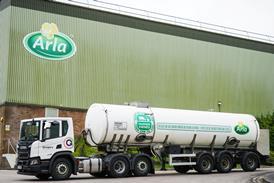



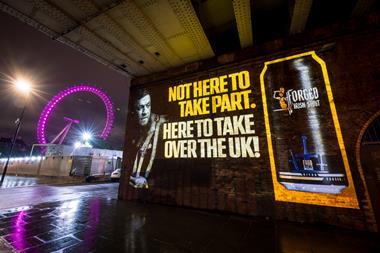
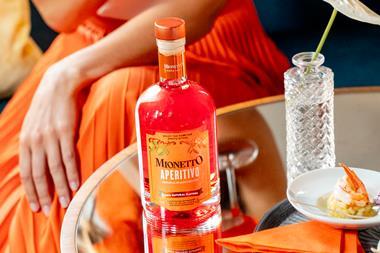





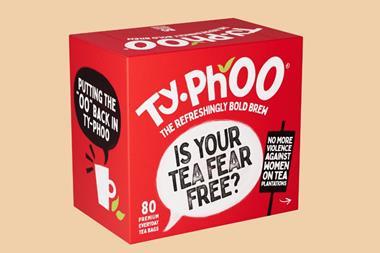
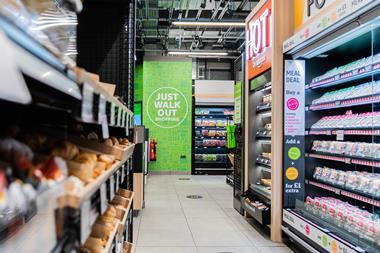
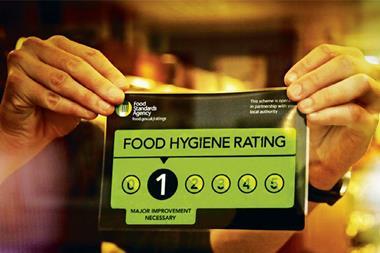
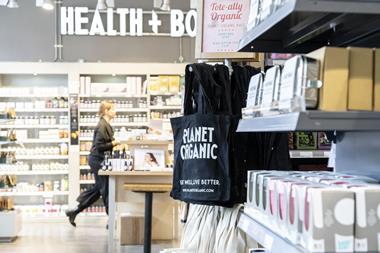
No comments yet